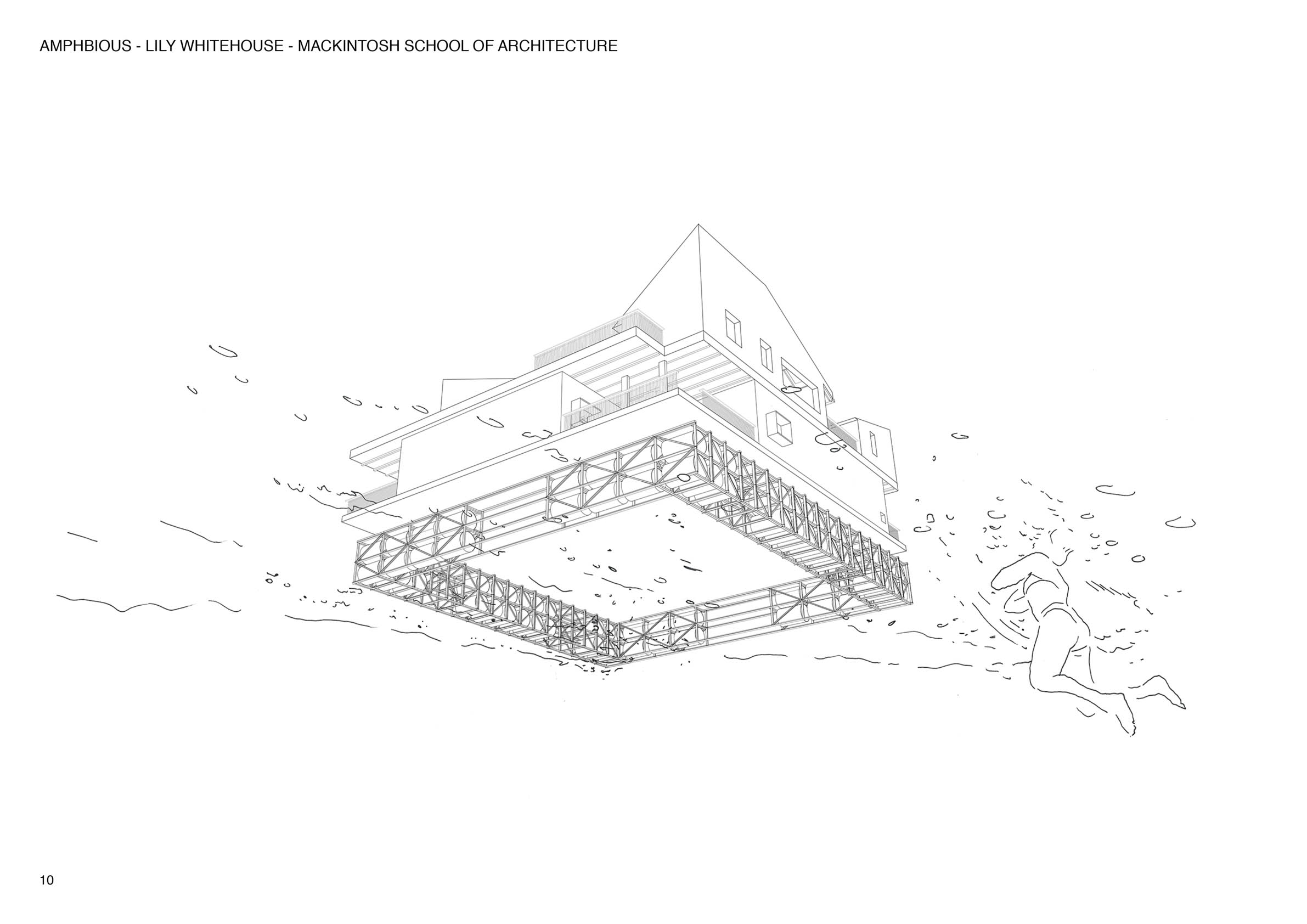Student Awards 2020: a look at this year’s winners

Studying architecture in 2020 has been challenging. Limited access to studios and other resources forced students to take new approaches to their study and finding their next steps after their study.
Despite working under these unique circumstances, we’ve seen an unprecedented level of high-quality submissions for the 2020 RIAS and A&DS Scottish Student Awards. We spoke to the winners at the student awards to hear their views on good design, studying in Scotland and how architecture can build back better.
Having graduated from Glasgow School of Art, Lily now works for FPCR in the East Midlands of England. Her work was also featured at this years’ Archfringe.
Tell us about your project?
The project centres around a residential building for young musicians to live together and perform in nature. In response to the climate crisis, the building adapts to changes in water level by floating in the river and being able to travel into the loch. Doing so reconnects Balloch’s historic journey from the train line onto the water and up to the highlands. Being able to move prevents the private retreat from imposing on Balloch’s public realm. The wider proposal features a public performance hall that acts as a gateway to Loch Lomond and The Trossachs National Park, defining a new town square for Balloch and the existing residents.
"Having a body like RIAS and A&DS give such thoughtful comments has made me feel that my values as a designer are not only recognised but encouraged."
How do you feel about winning the award?
Truly honoured! I didn’t expect to be shortlisted for two awards let alone win one. Having a body like RIAS and A&DS give such thoughtful comments has made me feel that my values as a designer are not only recognised but encouraged.
Whilst interviewing for my Part 1 placement I spoke about the award and I’m sure it helped me to secure a position, especially considering the difficulties we’re facing finding jobs due to Covid-19.
What advice would you give to anyone thinking of studying architecture?
Studying architecture can be very draining and isolating. Try to remain a multidisciplinary person that takes care of their health, both mental and physical. Keep friendships and outside passions going as much as you can, as these will enrich your designs. Look after what makes you individual and don’t be afraid to challenge the brief.
Guro Vold’s work drew inspiration from her experience working at a practice in Stockholm. She now graduates from Glasgow School of Art having also been nominated for the AJ PG Student Prize 2020
Tell us about your project?
The thesis was formed around the ambition to take in use the existing built fabric of Antwerp, where the project was based. But as I found large post-industrial areas with many abandoned 20th century warehouses, I developed the project around the possibility of deconstructing these buildings to reuse each component to rebuild the district to suit the current needs of the city. It focuses on limiting demolition waste and reducing our carbon footprint in the construction industry.
"With all the online resources and virtual events, it has been more accessible to learn about different topics too."
How do you feel about winning the award?
It feels incredibly rewarding to win the Sustainable Design Award. It shows that perhaps building material reuse can be an important step forward in architecture.
How has studying architecture under lockdown felt?
Studying during the lockdown has been very different from the usual studio routine. In a way, everything slowed down and it gave me time to reflect and consider both how my thesis project came together, and where my position in architecture is. With all the online resources and virtual events, it has been more accessible to learn about different topics too, which has been good. It has, however, been challenging to develop the project with the lack of continuous discussion with peers and tutors, and it made me work very differently.
Graduating from Glasgow School of Art, Linda is currently freelancing for a Latvian architecture firm. Her work, a musical retreat in Balloch, looks at acoustics and wellbeing in architecture.
Tell us about your project?
The musical retreat in Balloch is a calming environment to nurture the community and orchestral talents of children from the Big Noise organisation (Big Noise creates communities for vulnerable children through music). I explored the typology of the docks as a safe space to tie down, subtly following the long narrow shapes of the boats, docks, paths, railway and the slipway To create a supportive environment. The courtyard structure serves as a protective boundary and the inward-oriented structure creates a space for the children to connect as a group. To accommodate for the musical nature I’ve added domes, platforms and sloped objects to play with noise dispersion and perception.
How has studying architecture under lockdown felt?
Studying under lockdown has been an absolute roller-coaster. It made me realise how important structure is in my life, especially concerning physical studio spaces and the idea exchange between students and tutors. There was no sense of purpose or need to do anything really.
"You should be passionate about enhancing the living conditions of people and living beings, about creating beauty in everyday spaces, sometimes at the expense of your free time and sanity!"
What is it like studying architecture in Scotland?
Studying architecture in Scotland has been an astonishing experience, especially at the Glasgow School of Art. I adore the personal approach the tutors take to advance each students’ projects and the care that is taken to make the students comfortable with exploration and imagination. The project based study structure allows for the practical development of skill and independence through the integration of the other modules into the studio work.




